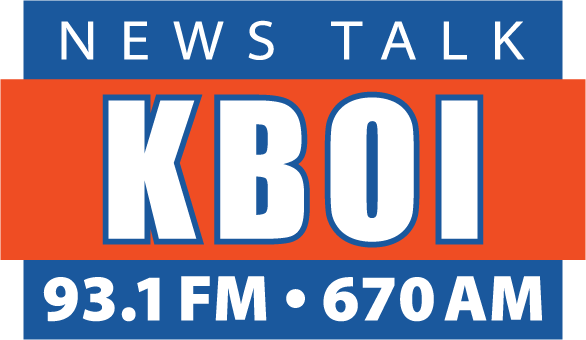Amid extreme drought, excessive heat, multiple fire starts, and dwindling firefighting resources regionwide, Governor Brad Little issued an emergency declaration for wildfire today and mobilized Idaho National Guard firefighters and aircraft to assist in the effort.
“Wildfire is presenting an imminent threat to life, property, and the environment, and we need all hands on deck. I appreciate our firefighters and fire managers for working so hard under such challenging conditions, and I am grateful that our guardsmen are able to step in once again to support Idaho communities,” Governor Little said. “I want to thank Idahoans for doing their part to prevent wildfires during a season where Idaho is particularly vulnerable to human-caused wildfires.”
North Idaho is experiencing multiple wildfires resulting from dry lightning events. Extreme fire conditions are now at an all-time maximum or exceeding all-time maximum levels, and weather forecasts indicate no break in fire weather conditions in the weeks ahead.
Fire suppression resources available to respond to ongoing wildfires or new wildfire ignitions are significantly diminished in the region because of the number of significant fires burning in the West.
It is the first time the Idaho Department of Lands (IDL) has requested the Governor issue an emergency declaration to make Idaho National Guard resources available for fighting wildfire on the 6.2 million acres of land across mostly North Idaho where IDL provides fire protection. The Governor’s emergency declaration authorizes National Guard personnel with fire line qualifications to work on active wildfires and for other personnel to support fire logistic activities. In addition, the Governor’s emergency declaration makes National Guard aircraft resources available.
In anticipation of the emergency declaration, the IDL has been working with the Idaho Office of Emergency Management to begin the process of activating National Guard resources for fire suppression and logistics support.
In 2020 and in the spring of 2021, in preparation for severe fire conditions like Idaho now faces, the IDL provided wildland firefighter training to National Guard personnel, a phenomenal collaboration between agencies.
In addition, the IDL has requested its own agency personnel – anyone with fire line qualifications – to make themselves available for fire assignments.
FIRE RESTRICTIONS EXPECTED IN COMING DAYS
Fire managers are expected to announce in the coming days that parts of Idaho will enter Stage 1 and Stage 2 fire restrictions. More than 80-percent of the nation’s fires are started by people, not lightning.
What are fire restrictions? Fire restrictions are meant to prevent human-caused wildfires. There are Stage 1 and Stage 2 restrictions, with specific prohibited activities for each listed below. Restrictions can be declared in a portion of the state, or in multiple areas by local authorities.
Who can declare fire restrictions? Fire restrictions can be implemented on state, federal, Tribal Trust and private lands under applicable federal and state laws. These laws grant the respective agencies the general authority to protect lands entrusted in their care by restricting use or closing areas to entry for protection of life and safety of public.
Why are fire restrictions done locally rather than for the entire state? Local agencies follow established, statewide-approved guidelines for implementing fire restrictions in their geographic areas. There are eight main fire restriction zones in Idaho, with additional fire restriction areas within those zones. Area representatives use their hyper-local expertise and specific, objective criteria to determine if restrictions are needed.
The local decision-making approach is critical for determining the right place and the right time for fire restrictions. One zone’s determination for restrictions may not be appropriate statewide.
What is prohibited during Stage 1 Fire Restrictions
Building, maintaining, attending, or using a fire, campfire or stove fire except within a designated recreation site. If you live within a city limit or incorporated area, follow local direction. If you own land outside city limits or incorporated area you may have a campfire on your own land but only within a fire structure.
Smoking except within an enclosed vehicle or building, a designated recreation site or while stopped in an area at least three feet in diameter that is barren or cleared of all flammable materials.
What is prohibited during Stage 2 Fire Restrictions
Building, maintaining, attending, or using a fire, campfire (wood or gas fueled), or stove fire. Campfires are not allowed anywhere when under a Stage 2 restriction.
Smoking except within an enclosed vehicle or building, a designated recreation site or while stopped in an area at least three feet in diameter that is barren or cleared of all flammable materials.
Operating motorized vehicles off designated roads and trails.
The following acts are prohibited from 1 p.m. to 1 a.m. during Stage 2 Fire Restrictions:
Operating a chainsaw or other equipment powered by an internal combustion engine for felling, bucking, skidding, processing, road building and woodcutting during industrial operations or firewood gathering.
Blasting, welding, or other activities that generate flame or flammable material.
Using an explosive.
A patrol is required for one hour (three hours for anyone engaged in a Forest Operation requiring a Certificate of Compliance) following cessation of all work as described above.
The latest recorded information on fire restrictions is available by calling 1-844-ID-FIRES or 1-844-433-4737. For specifics on exemptions, frequently asked questions, and more, please refer to the Idaho Fire Restrictions Plan. Find out more about fire restrictions at www.idl.idaho.gov.









